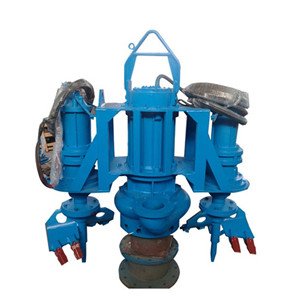How to operate Mineral pumps
The safe operation of mineral pumps is a multi-step process and requires strict adherence to prevent reduced efficiency, excess wear and tear, or potentially permanent damage or breakdown. Here, we will discuss this process in detail.
FIRST
- Check that the direction of rotation of the motor is consistent with that of the pump (please refer to the corresponding model instructions). In the test motor rotation direction, the test motor should be separated, and must not be connected with the mineral pump.
- Verify whether the elastic pad in the coupling is intact.
- Verify that the motor shaft and pump rotate concentrically.
- The handcart car, including the motor pump, should not be astringent and friction phenomenon.
- Check the bearing box to join the bearing oil to the oil mark indicating position.
- The pump should be started before the shaft-sealing water seal (mechanical seal for the cooling water). At the same time, start the pump inlet valve and close the pump outlet valve.
- Check the valve for flexibility and proper function.
- Check anchor bolts and flange seals. Verify that the piping system is installed correctly.
SECOND
- The high pressure slurry pumps should be started before opening the pump inlet valve. Close the pump outlet valve, then start the pump. Open the pump outlet valve slowly, and check the size of the opening and speed of the flow of water. The pump should not vibrate, and the motor should not exceed the rated current.
- For the tandem series, follow the above method. Open a pump outlet valve- you can look at the end of the valve to find a small opening (open size to a pump motor current rated current of 1/4 is appropriate), and then start two to three. Until the last stage pump of the tandem pump series is started, you can gradually open the last stage of the pump outlet valve to increase the size of the opening of the valve and the speed. The pump should not vibrate, and no motor should exceed the rated current.
- The main purpose of the slurry pump is to deliver the flow rate. Therefore, it is best to install the flow meter in the operation monitoring system to monitor the flow rate at all times. In the pipeline system with swirled, the filter press dewatering system also requires a certain pressure at the exit of the pipeline. Therefore, this system should also be fitted with a pressure gauge to monitor whether the pressure meets the requirements.
- In addition to monitoring the pump flow and pressure during operation, the motor must also be monitored to ensure the rated current is not exceeded. Always monitor oil seals and bearings as well.
THIRD
- The suction pipe system of the mineral pumps should not leak. The grill in the pump chamber should meet the requirements of the particles being filtered to prevent blockage by large particles or the entry of long-fiber materials.
- Worn parts should be promptly replaced, and the correct part, assembly, and the installment should be verified.
- Sleeve and bearing replacement should be done in a timely fashion, and bearing pressure should be assessed and tested regularly to ensure the tightness of the filter and prevent seal leakage.
- When replacing the bearing, ensure that the bearing assembly is dust-free and the lubricating oil is clean. When the pump is running, the bearing temperature should not fall below 60-65˚C, and should not exceed 75˚C.
- To ensure the motor and pump concentricity and complete and correct elastic pad coupling, worn or damaged parts should be promptly replaced.
- Ensure that the mineral pumps components and piping systems are installed correctly.
FOURTH
- Assembly and disassembly of mineral pumps head parts and clearance adjustment of pump head parts should be carried out according to the assembly drawings.
- The packing shaft should be assembled and disassembled and according to the assembly drawing. In order to ensure the sealing effect of the packing shaft seal, the shape of the packing opening should be cut, as shown in the figure. When loading into the packing box, filler openings should be offset by 108 degrees when loaded.


